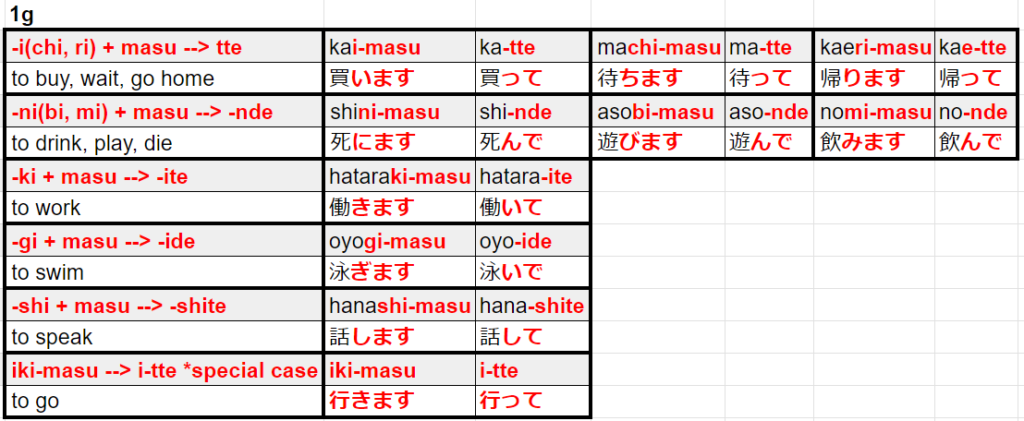
What is Te-form? Why is it important? What is the best way to remember it?
What is Te-form?
Te-form is one of the verb conjugated forms in Japanese.
It is termed Te-form because the final sound of conjugated verbs transforms into either て(te) or で(de).
For example,
To eat:
食べる → 食べて
Taberu → Tabe-te
To drink:
飲む → 飲んで
Nomu → Non-de
Why is Te-form important?
Te-form is important because:
- It is essential as it connects with various crucial auxiliary verbs
- It can be also used alone
So, without remembering it, learning Japanese can become challenging for you.
But there are tips to remember it easily for you!
How to remember Te-form efficiently?
To memorise Te-form conjugation easily:
- Remember Japanese 3 verb groups and how to make masu-form from it
- Study Group 2 and Group 3 verbs’ Te-form conjugation
- Study Group 1 verbs’ Te-form conjugation
are my recommended steps.
So, let’s start!
Remember Japanese 3 verb groups and how to make masu-form from it
Remembering Japanese 3 verb groups is necessary to study Te-form.
Because, the ways to conjugate the verbs into te-form vary according to the group to which a verb belongs.
There is an article about verb groups : Verbs in Japanese
In simple terms, it goes like this:
- G1: Verbs which do not belong to G2 and G3
- G2: Verbs which ends with iru or eru sound (e.g. 起きる:ok-iru: to wake up, 食べる:tab-eru: to eat)
- G3: 2 verbs only! (来る:kuru: to come, する: surr: to do)
And here’s how to make masu-form which you have been familiar with by now:
G1 :
–u → –imasu (e.g. 書く → 書きます (kak-U → kak-IMASU) : to write)
G2 :
–iru → –imasu (e.g. 起きる → 起きます (ok-IRU→ ok-IMASU) : to wake up)
–eru → –emasu (e.g. 寝る → 寝ます (n-ERU → n-EMASU) : to sleep)
G3 :
来る → 来ます (kuru → ki masu) : to come
する → します (suru → shi masu) : to do
See also: ます形 (masu form)
Well, are you ready for te-form??
Study Group 2 and Group 3 verbs’ Te-form conjugation
It’s getting very difficult from here.
To derive the te-form for Group 2 and Group 3 verbs:
Replace ます(masu) with て(te)
very difficult, no? ヽ(^o^)丿
Here, check the list.

Study Group 1 verbs’ Te-form conjugation
And now it’s about group 1 verbs.
This one is really hard.
No kidding, it’s quite challenging.
See the below list.

Looks very tough?
But there is a trick! And that’s why we needed to use masu-form to conjugate it into te-form!
*In the current Japanese, only 死ぬ: shinu: to die has this conjugation (because it is the only verb that ends with NU sound). So, don’t blame me using it as the example of -ni masu → -nde change, lol.
And here is a trick to remember Group 1 te-form:
- Open YouTube
- Search “te-form song”
- Sing karaoke with your favourite videos !
*You’ll find many creators make song videos to make te-form from masu-form.
Did you notice a special case: 行く: iku: to go?
Independently, there is a special case for te-form.
That is about a basic verb: 行く: iku: to go.
While the verb belongs to Group 1, and its masu-form is 行きます (Ik-imasu), similar to 働きます (hatarak-imasu: to work), whose te-form is 働いて (hatara-ite),
Its te-form is:
行って
I-tte
To go:
行く: iku
行きますik-imasu
行って: i-tte


Comment